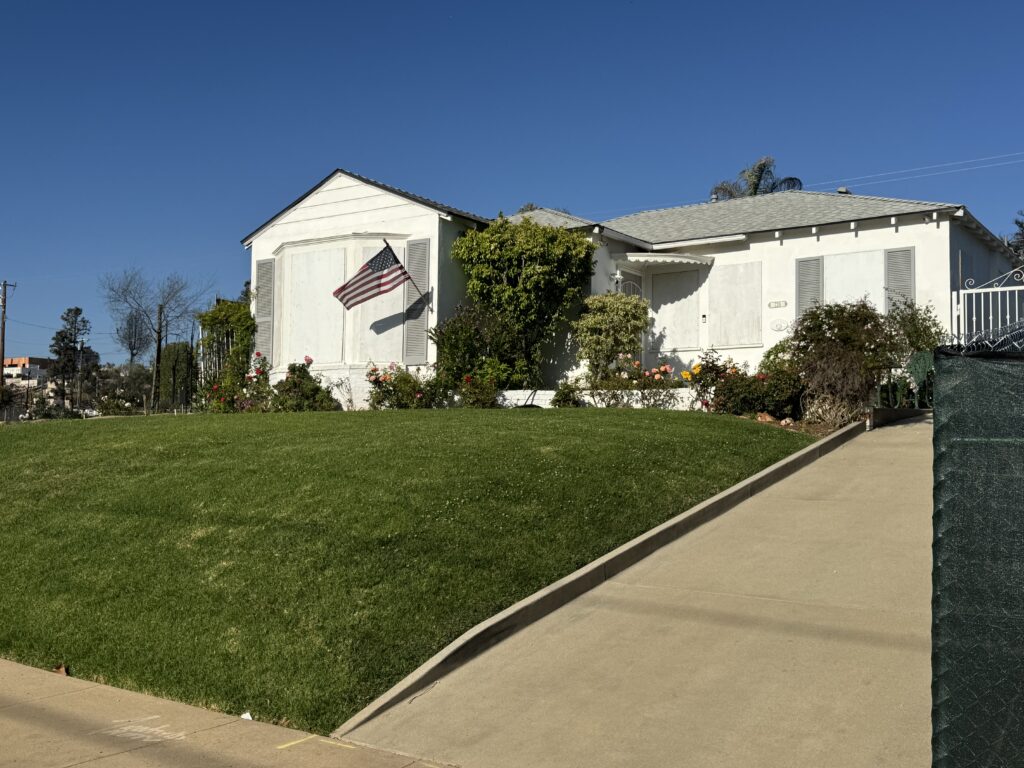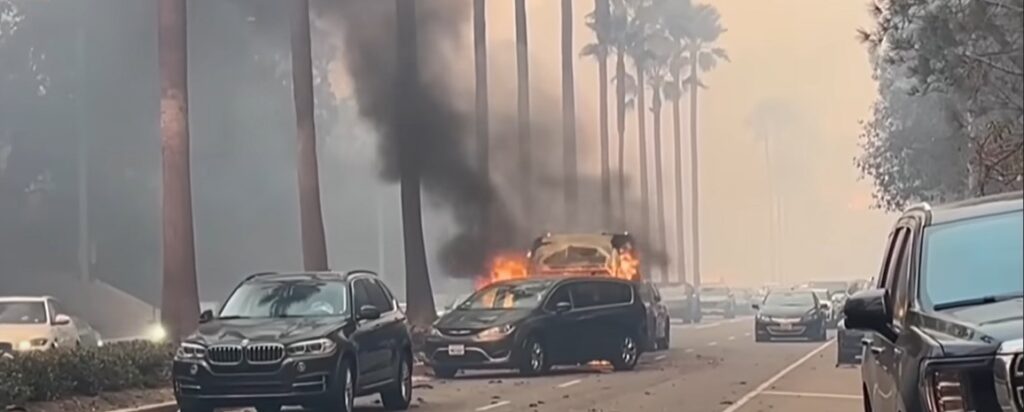The January 7 Fires in Pacific Palisades and Altadena produced enormous amounts of ash and debris from burned buildings, cars and landscaping. A consortium of researchers from 10 universities, including UCLA, Stanford, Yale, Harvard, USC and UC Davis are testing the impacts of the fire on the health of those affected by the fires.
In March and April, researchers drove through the towns of Pacific Palisades and Altadena testing for different airborne particles. The test did not include neighboring communities such as Brentwood, Santa Monica or Pasadena, which given the prevailing winds might have been interesting. The study was limited due to a restricted budget. Baseline testing for different elements prior to the fire is available from fixed monitoring sites operated by the SCAQMD (South Coast Air Quality Management District).
Researchers discovered the presence of Chromium 6 (Cr6) in nano-particles well above the typical background concentrations for Los Angeles. The EPA has published a level of 30 ng/m for Cr6, which they define as a level that you could breathe continuously, for long durations, that is likely to be without a risk of negative health effects over a lifetime.
The majority of the chrome found was chromium-6 and in very small particles with diameter less than 56 nm. The city-wide average concentrations of chromium-6 in Altadena and Pacific Palisades were 13.7 ng/m (+/- 6.2 ng/m ), but zones of higher concentration almost certainly existed near debris cleanup activities, researchers said.
Measurements made by the SCAQMD suggest that hotspots may exist with far greater concentrations.
Finding Cr6 in the air during the fire cleanup led many Pacific Palisades residents to panic, but researchers reassured residents that the situation warrants awareness and caution but does not rise to the level of a widespread public health threat based on what was measured.
Chromium can exist in several forms including Trivalent chromium (Cr3) (an essential trace nutrient for humans) and Hexavalent chromium (Cr6). This latter form became well-known as the chemical that poisoned the community of Hinkley, California, in the 2000 film, Erin Brockovich. However, the chromium-6 levels found in Hinckley water were dramatically higher than the airborne levels detected in this study.
“We want people to be aware that the fire debris may contain Cr6 and it should be handled with caution” said Dr. Mike Kleeman about the six measurements reported in the study “Elevated Levels of Chromium-6 Discovered in Palisades and Altadena Air.”
Kleeman is one of the study authors and a professor of civil and environmental engineering at U.C. Davis. Follow-up measurements were collected yesterday and today, September 4 and 5, to confirm that levels have returned to normal background now that debris cleanup is complete.
“The theory is the ash contained the Chromium 6 that was observed during debris removal,” Kleeman said. “We hope the problem is over now that debris removal is complete, but we need to check it.”
The heaviest debris removal in Pacific Palisades, according to the Army Corps of Engineers was in April, which might support Kleeman’s theory.
And the workers that were onsite? The study noted that “the city-wide average measured levels are well below the official limits for workers, based on breathing the air for eight hours per day, set by NIOSH (National Institute for Occupational Safety and Health).
Kleeman was asked about the source of Cr 6 and he said they didn’t know, but several sources were being investigated and included electronics, solar panels, computers and fire retardant. He was asked about electrical cars and said those batteries contain nickel and are not likely a source.
For those who have standing homes, Kleeman recommends a certified industrial hygienist to test for metals including total chrome. If total chrome levels are high, then further tests for Cr6 may be advisable.
Other recommendations, out of caution, include: 1) use air cleaners or purifiers with HEPA filters inside homes and classrooms, 2) upgrade HVAC filters to MERV 13 or high rated filter, 3) using HEPA vacuums to clean floors and upholstery, 4) remove shoes before entering homes to avoid tracking dust inside and 5) wear N95 masks while cleaning.

This house survived the fire. It is surrounded by vegetation and a well-watered lawn. Researchers suggest using an air cleaner with a HEPA filter inside the home.


We now live in the Santa Monica Canyon— less than 1/2 mile from the Palisades burn scar.
The researchers mentioned that there was potential contamination of Chromium 6 within 6 miles of the fires… which extends all the way to Westwood to the east and Marina del Rey to the south.
What about our soil? Is anybody doing more testing of the larger area? Or are we all on our own?!
And — the 90402 area code. (the Santa Monica Canyon) gets our water (which was toxic from many many months after the fire) from the Palisades. Did anyone test the water for chromium 6?? Where is Erin Brockovich to rally for us!!?
Will you please report on test results for samples being collected after the Army Corps finished clearing debris?
Thank you,
Why has the Archdiocese not been public & transparent about why they have not removed their toxin filled church building from our residential neighborhood? They must remove that debris immediately / clear the lot !!! Communicate with us. Our health & well being is at risk each day it remains. I’ve asked the question many times, “Why has the damaged church building not been cleared?” … and heard crickets. We need to hear from the Archiocese itself… not second hand.